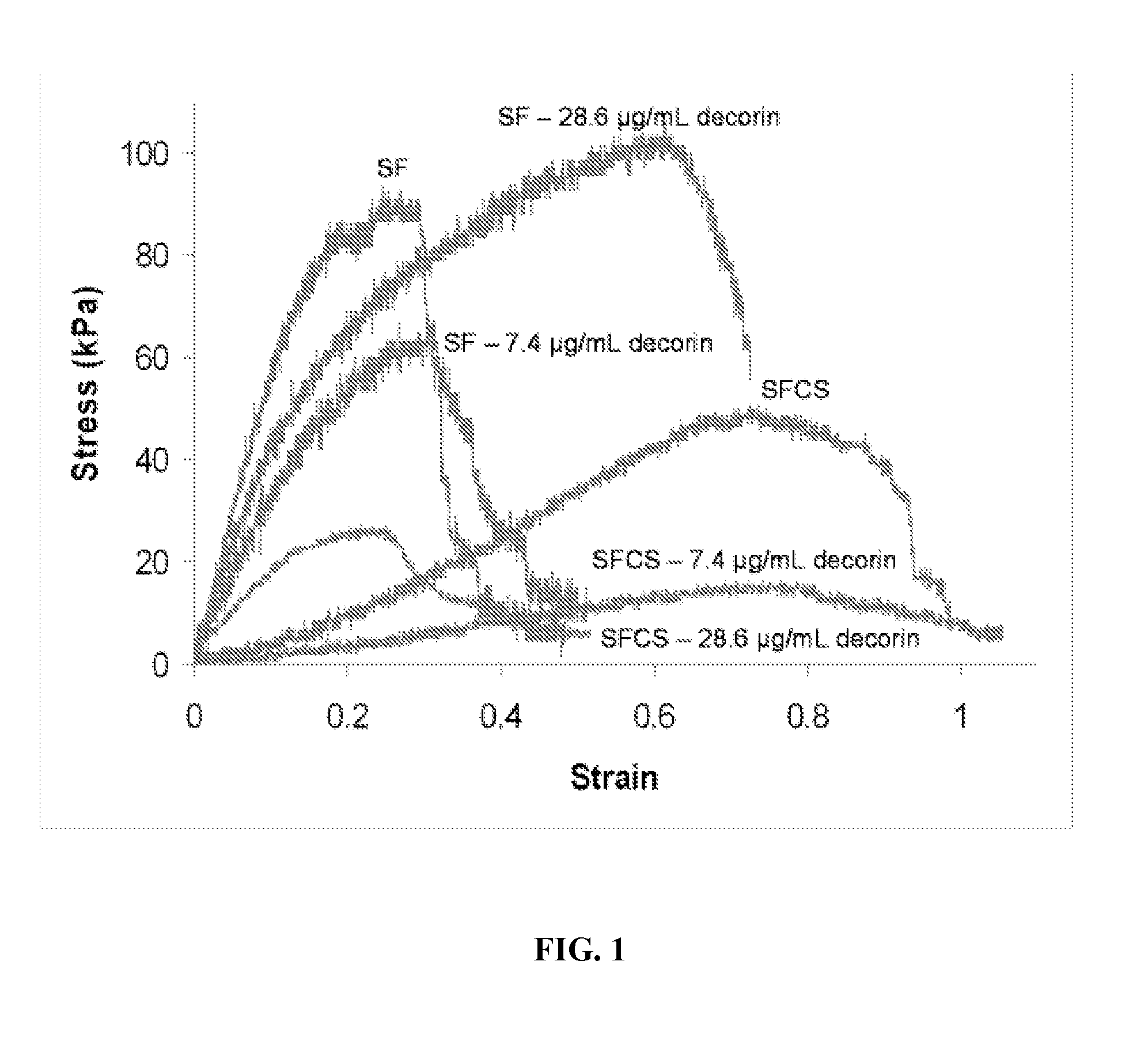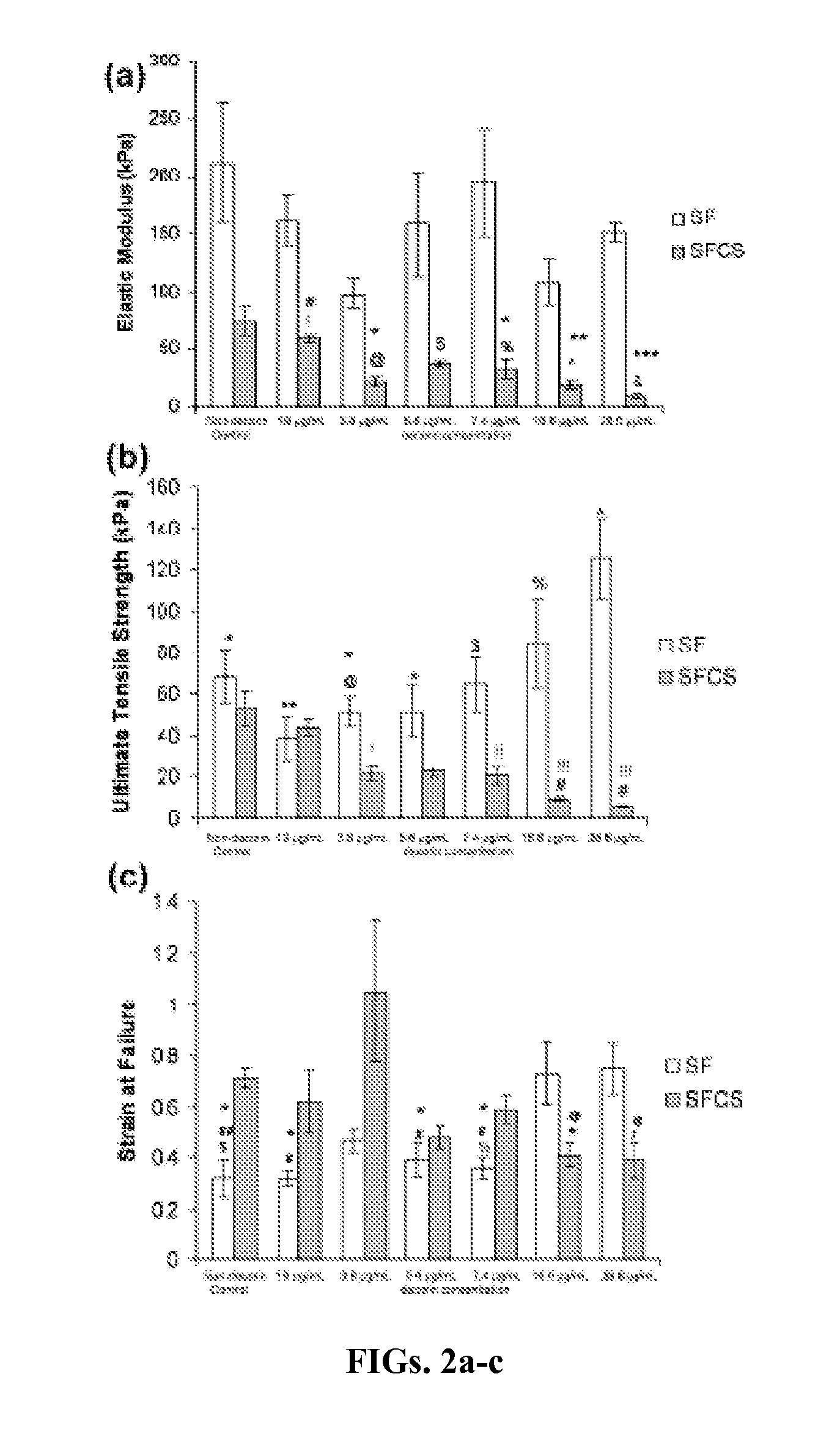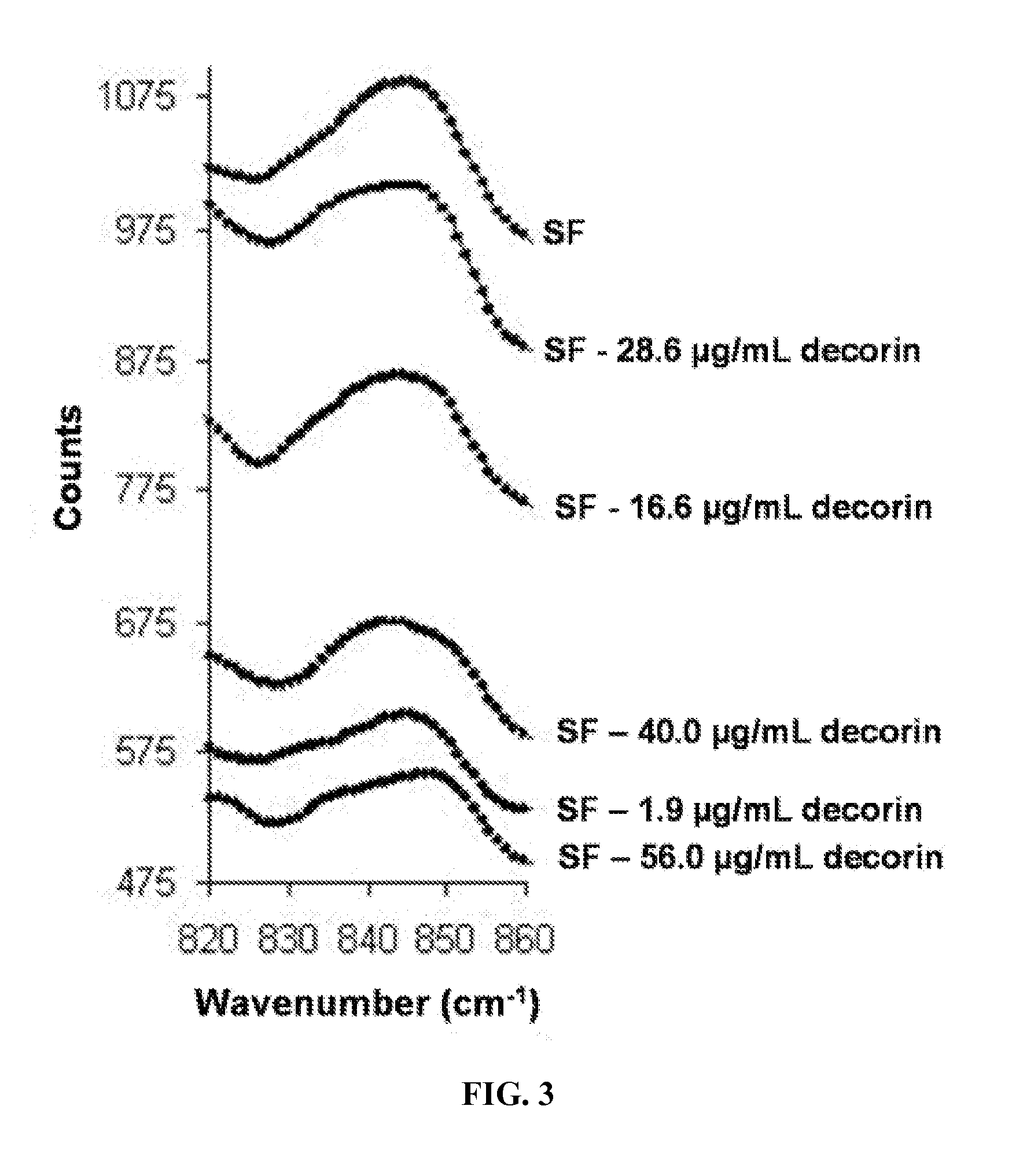Silk fibroin-decorin scaffolds
a scaffold and fibroblast technology, applied in the field of tissue scaffolds, can solve the problems of less and weaker adhesion, more expensive, patient morbidity, etc., and achieve the effects of improving the mechanical strength of the sf scaffold, improving bioengineering properties, and increasing the tensile strength of the pre-implan
- Summary
- Abstract
- Description
- Claims
- Application Information
AI Technical Summary
Benefits of technology
Problems solved by technology
Method used
Image
Examples
example 1
Effect of Decorin on Silk Fibroin Based Scaffold Structure and Mechanical Properties
Materials and Methods
[0044]Scaffold Preparation.
[0045]The preparation of pure SF from silk (donated from Dr. S. Hudson, TECS, N. Carolina State University, Raleigh, N.C.) and 75:25 SFCS blend has been described in detail by Gobin et. al., 2005. A 100 μg / mL solution of decorin (Sigma-Aldrich, St. Louis, Mo.) was prepared by adding 5 mL phosphate buffer solution (PBS, 1× without calcium and magnesium) to 0.5 mg decorin. Varying amounts of this stock solution were added to SF or SFCS solution to make final volume of 5 mL in concentrations ranging from 1.9 to 56.0 μg / mL decorin. Controls of 5 mL of SF or SFCS were also prepared. The solutions were then poured into plastic petri dishes (35 mm diameter). These petri dishes were set into larger dishes containing 99.9% ethanol and frozen overnight at −80° C. freezer followed by lyophilization for 2-3 days. The dry SFCS-decorin samples were crystallized with ...
PUM
| Property | Measurement | Unit |
|---|---|---|
| thickness | aaaaa | aaaaa |
| thickness | aaaaa | aaaaa |
| ultimate tensile strength | aaaaa | aaaaa |
Abstract
Description
Claims
Application Information
 Login to View More
Login to View More - R&D
- Intellectual Property
- Life Sciences
- Materials
- Tech Scout
- Unparalleled Data Quality
- Higher Quality Content
- 60% Fewer Hallucinations
Browse by: Latest US Patents, China's latest patents, Technical Efficacy Thesaurus, Application Domain, Technology Topic, Popular Technical Reports.
© 2025 PatSnap. All rights reserved.Legal|Privacy policy|Modern Slavery Act Transparency Statement|Sitemap|About US| Contact US: help@patsnap.com



